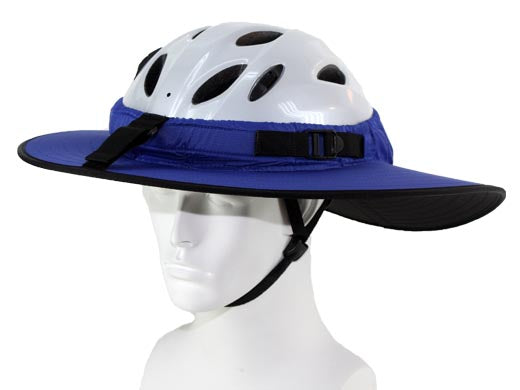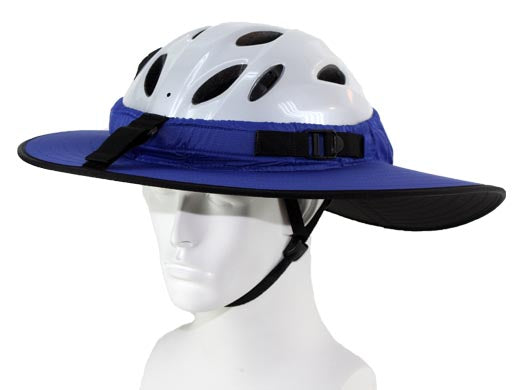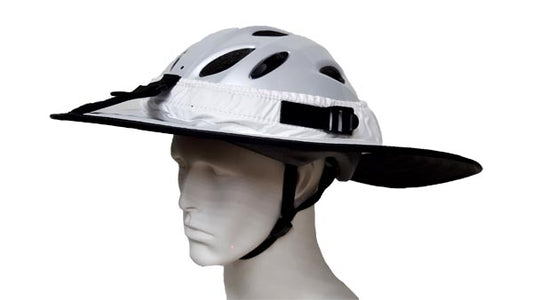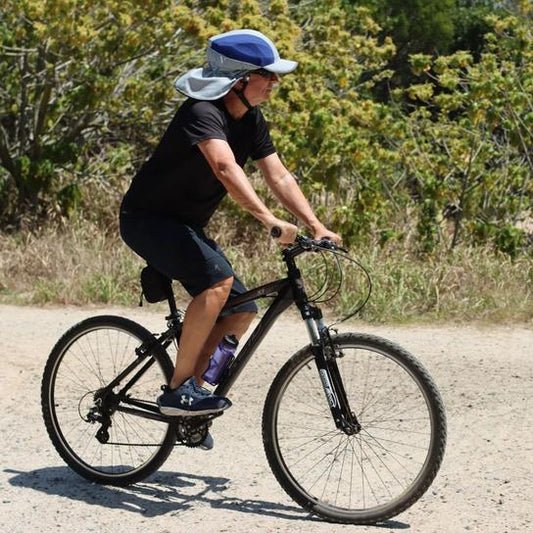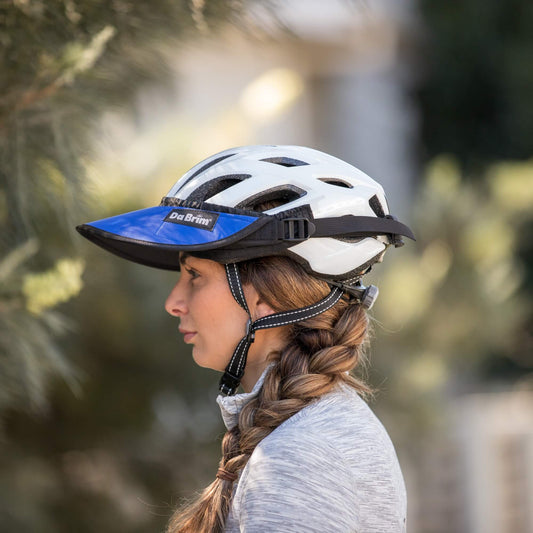Introduction
Cycling is a popular activity enjoyed by millions of people worldwide, whether as a form of transportation, a competitive sport, or a leisure activity. However, like any activity involving speed and motion, cycling comes with inherent risks. Among the most significant of these risks is the potential for head injuries, which can have serious, sometimes life-threatening consequences. A properly fitting helmet is the most effective means of protecting cyclists from such injuries, making it an essential piece of equipment for anyone who rides a bike.
This article delves into the importance of wearing a properly fitting helmet while cycling, exploring how helmets protect the head, the consequences of improper helmet fit, and tips for selecting the right helmet. With the rise in cycling’s popularity, particularly in urban areas, understanding and prioritizing helmet safety has never been more critical.
How Helmets Protect Cyclists
1. The Mechanics of a Helmet
A helmet is designed to protect the head by absorbing and dissipating the energy of an impact. When a cyclist falls or is involved in a collision, the helmet acts as a protective barrier between the skull and the hard surface, such as the road or pavement. The primary components of a bike helmet include:
-
Outer Shell: The outer shell, typically made of polycarbonate or another strong plastic, is the first line of defense. It protects the inner foam from punctures and helps the helmet slide on impact, reducing the risk of head and neck injuries.
-
Inner Foam Liner: The foam liner, usually made of expanded polystyrene (EPS), is the most crucial part of the helmet for impact absorption. Upon impact, the foam compresses, dissipating the force and reducing the amount of energy transmitted to the skull.
-
Retention System: The straps and buckles that secure the helmet to the head ensure that it stays in place during an impact, maximizing protection.
When a helmet fits properly, these components work together to protect the brain from injury by absorbing and redirecting the force of the impact. A helmet that doesn’t fit properly, however, may not offer adequate protection, leaving cyclists vulnerable to serious injuries.
2. Types of Head Injuries Prevented by Helmets
A properly fitted helmet can significantly reduce the risk of various types of head injuries, including:
-
Concussions: A concussion is a type of traumatic brain injury caused by a blow to the head. Helmets can reduce the force of impact, thereby decreasing the likelihood of a concussion.
-
Skull Fractures: Helmets provide a protective layer that helps prevent the skull from fracturing in the event of a fall or collision.
-
Intracranial Hemorrhage: This refers to bleeding within the skull, which can occur if the head experiences a strong impact. Helmets can reduce the force of the impact, minimizing the risk of such injuries.
-
Scalp and Facial Injuries: While helmets primarily protect the skull, they can also help reduce injuries to the scalp and face by absorbing the force of an impact.
Studies have shown that wearing a helmet can reduce the risk of head injury by up to 85% and the risk of brain injury by up to 88% . However, these protective benefits are contingent upon the helmet being properly fitted and securely fastened.
The Consequences of Improper Helmet Fit
1. Increased Risk of Injury
A helmet that does not fit properly can be nearly as dangerous as not wearing a helmet at all. If a helmet is too loose, it may shift during a fall, exposing parts of the head to impact. Conversely, if a helmet is too tight, it may be uncomfortable, leading the rider to wear it incorrectly or not at all.
In a crash, a poorly fitting helmet can fail to protect the head because it may not be positioned correctly to absorb the impact. For example, if the helmet sits too far back on the head, the forehead, one of the most vulnerable areas, may be exposed.
2. Comfort and Usability Issues
A helmet that is uncomfortable is unlikely to be worn consistently or correctly. Cyclists who experience discomfort, such as pressure points or headaches, may be tempted to loosen the straps or push the helmet back, both of which compromise its protective function. Moreover, an uncomfortable helmet may discourage regular use, leading cyclists to forgo wearing it altogether.
3. Legal and Insurance Implications
In many regions, wearing a helmet is not only a safety measure but a legal requirement. For instance, in Australia, all cyclists are required by law to wear a helmet that complies with the Australian/New Zealand Standard (AS/NZS 2063). Failure to wear a helmet or wearing one that is improperly fitted can result in fines and may also impact insurance claims in the event of an accident.
Insurance companies may refuse to cover medical expenses or damages if it’s found that the cyclist was not wearing a helmet correctly at the time of the accident. This can have significant financial implications, particularly in cases involving serious injury.
How to Ensure a Proper Helmet Fit
1. Measuring Your Head
The first step in selecting a properly fitting helmet is to measure your head. Use a flexible tape measure to find the circumference of your head, placing the tape about an inch above your eyebrows and ears, where the helmet will sit. This measurement will help you choose the correct helmet size, as helmets are typically sized in centimeters.
2. Choosing the Right Size
Helmets come in various sizes, generally ranging from small to extra-large, based on the head circumference. Refer to the helmet’s size chart to find the size that corresponds to your measurement. If you fall between two sizes, opt for the smaller size, as it’s easier to adjust a slightly tighter helmet than a loose one.
3. Helmet Positioning
Once you have the correct size, the next step is to position the helmet correctly on your head. The helmet should sit level on your head, covering your forehead. The front of the helmet should be about one to two finger-widths above your eyebrows. If the helmet tilts back, it exposes the forehead, reducing protection in a frontal collision.
4. Adjusting the Straps
Proper strap adjustment is critical for ensuring that the helmet stays in place during a crash. Start by adjusting the side straps so that they form a "V" shape under and slightly in front of each ear. The buckle should be centered under your chin, and the chin strap should be snug but not too tight; you should be able to fit one or two fingers between the strap and your chin.
Check that the helmet doesn’t move more than an inch in any direction when you shake your head. The helmet should feel secure without causing discomfort.
5. Regular Checks and Maintenance
Helmets can loosen over time, so it’s important to regularly check the fit and make adjustments as necessary. Inspect your helmet for any signs of wear and tear, such as cracks in the shell or foam liner, which may compromise its effectiveness. Replace your helmet if it’s damaged or if you’ve been involved in a significant crash, as the impact can reduce the helmet’s ability to protect you in the future.
6. Consider the Helmet’s Features
When selecting a helmet, consider additional features that can enhance both safety and comfort. For instance:
-
MIPS Technology: Multi-directional Impact Protection System (MIPS) is a safety feature designed to reduce rotational forces during a crash. MIPS helmets have a low-friction layer that allows the helmet to slide relative to the head, reducing the risk of brain injury.
-
Ventilation: Look for a helmet with good ventilation to keep your head cool during long rides. Proper airflow can also reduce discomfort and encourage consistent helmet use.
-
Visor: Some helmets come with a built-in visor, which can protect your eyes from the sun and debris. This is particularly useful for mountain biking or long-distance rides in sunny conditions.
Common Myths About Helmet Use
Despite the clear benefits of wearing a properly fitting helmet, several myths and misconceptions persist. Addressing these myths is essential for encouraging wider adoption of helmet use.
1. “Helmets Don’t Make a Difference in Low-Speed Collisions”
One common myth is that helmets are only necessary for high-speed cycling, such as road racing or mountain biking. However, most cycling accidents occur at relatively low speeds, often in urban areas. Even at low speeds, a fall can cause significant head injuries if the head strikes a hard surface. Helmets provide critical protection in these scenarios, reducing the risk of injury regardless of the speed at which you’re riding.
2. “I Don’t Need a Helmet for Short Rides”
Another misconception is that helmets are unnecessary for short trips, such as cycling to the local store or a friend’s house. The reality is that most cycling accidents occur close to home, during short, everyday rides. Wearing a helmet every time you ride, no matter how short the journey, is essential for ensuring your safety.
3. “I’m a Skilled Cyclist, So I Don’t Need a Helmet”
Some experienced cyclists believe that their skill level reduces their need for a helmet. While skill can reduce the likelihood of an accident, it doesn’t eliminate the risk entirely. Accidents can be caused by factors beyond your control, such as road conditions, weather, or other road users. Wearing a helmet is a simple precaution that provides valuable protection, regardless of your skill level.
4. “Helmets Are Uncomfortable”
Advancements in helmet design have significantly improved comfort, making helmets lighter, better ventilated, and more adjustable. While some cyclists may remember bulky and uncomfortable helmets from years past, modern helmets are designed to provide both protection and comfort. Finding the right fit and choosing a helmet with good ventilation can help address any concerns about discomfort.
